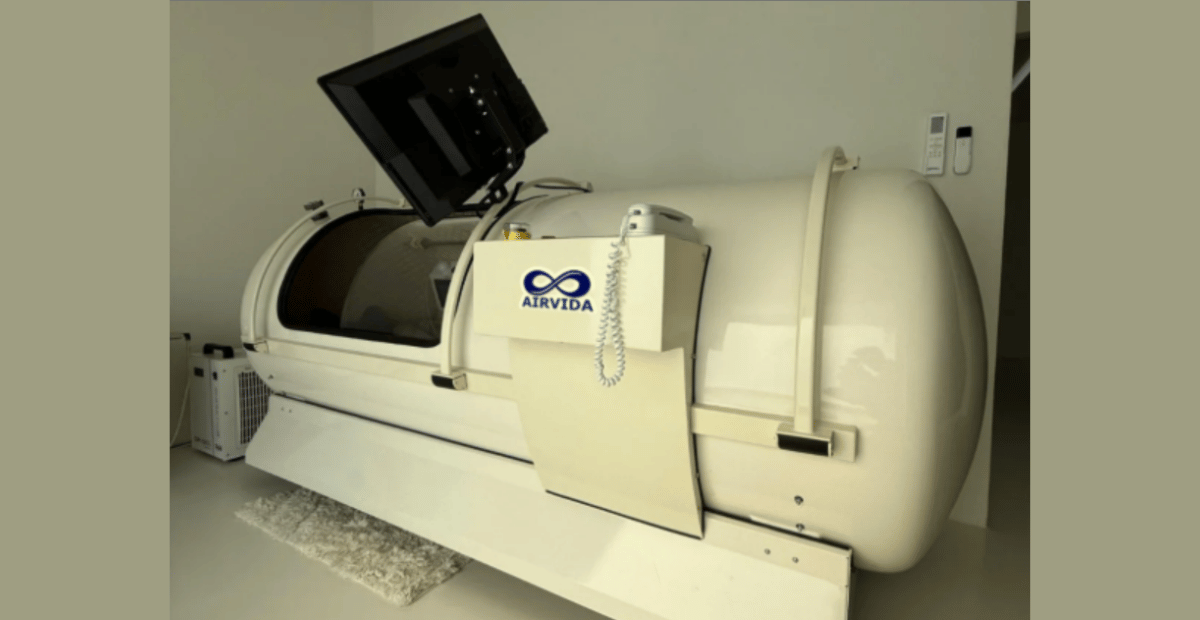A hyperbaric chamber for the bends plays a crucial role in the treatment and management of decompression sickness, commonly known as “the bends.” By providing a controlled environment with increased pressure, these chambers may potentially help reduce symptoms and support recovery for divers and others affected.
This article will discuss how hyperbaric chambers work in treating the bends, explore different types of chambers available, and outline the potential benefits and safety considerations of this therapy. We encourage you to continue reading for a thorough understanding of this important topic.
What Is the Bends?
The bends, or decompression sickness (DCS), occurs when nitrogen gas dissolved in the blood and tissues forms bubbles as pressure decreases rapidly, commonly after scuba diving or other activities involving quick ascent. These bubbles can block blood flow and cause symptoms that range from mild joint pain and dizziness to severe neurological issues.
Risk factors include rapid ascent, inadequate decompression stops, deep or prolonged dives, and individual susceptibility. Symptoms often affect the joints, muscles, skin, and nervous system, with severity determining the urgency and type of treatment needed.
How Does a Hyperbaric Chamber for the Bends Work?
A hyperbaric chamber for the bends operates by exposing the patient to increased atmospheric pressure while they breathe nearly pure oxygen. This process may help reduce nitrogen bubbles in the bloodstream, which are responsible for decompression sickness symptoms.
The elevated pressure combined with high oxygen levels may also enhance tissue oxygenation, potentially aiding cellular repair and decreasing inflammation. This approach is widely recognized as a key component in managing decompression sickness and mitigating related complications.
Key mechanisms involved include:
-
Increasing ambient pressure to shrink nitrogen bubbles
-
Breathing near 100% oxygen to accelerate nitrogen elimination
-
Enhancing oxygen delivery to tissues for potential repair
-
Supporting the reduction of inflammation associated with decompression injury
Which Type of Hyperbaric Chamber Is Best Suited for Treating the Bends?

When considering a hyperbaric chamber for the bends, choosing the right type of chamber is crucial to ensure effective and safe therapy. Different chambers offer varying pressure capabilities and features, which can impact treatment outcomes. In this section, we’ll explore the types of hyperbaric chambers commonly used to address decompression sickness and their suitability for managing the bends.
Soft-Shell Hyperbaric Chambers
Soft-shell chambers, sometimes called mild hyperbaric chambers, typically operate at pressures around 1.3 to 1.5 ATA. These portable and lightweight units are often used for wellness and recovery purposes, but may have limitations for severe bends cases requiring higher pressures.
Soft-shell models are popular for home or clinic settings where ease of use and affordability matter. However, for significant decompression sickness, higher-pressure chambers are usually preferred.
Hard-Shell Hyperbaric Chambers
Hard-shell hyperbaric chambers are designed for medical-grade use and can reach pressures between 1.5 ATA and 3.0 ATA. These chambers provide more precise pressure control and oxygen delivery, making them an effective hyperbaric chamber for the bends.
They are commonly found in hospitals, diving centers, and specialized clinics, where trained professionals supervise therapy. The robust construction and advanced monitoring features ensure safety during more intensive treatment protocols.
Potential Benefits and Limitations of Hyperbaric Chamber Treatment for the Bends
The primary benefit of using a hyperbaric chamber for the bends is the potential reduction of nitrogen bubbles and improved oxygen delivery to tissues, which may support symptom relief and healing. It also potentially reduces the risk of long-term complications associated with decompression sickness.
However, it is important to understand that responses vary, and hyperbaric chamber treatment may not replace emergency medical care or other interventions needed in severe cases. Consultation with a healthcare professional experienced in hyperbaric medicine is always recommended.
Spotlight on Airvida Hyperbaric Chambers Suitable for the Bends
Since hard-shell hyperbaric chambers are generally more suited for treating the bends, selecting the right chamber is crucial for effective and safe therapy. These chambers provide higher pressure capabilities, advanced safety features, and are often found in clinical or professional settings where decompression sickness requires prompt attention.
Airvida offers several high-performance hard-shell hyperbaric chambers designed to meet diverse needs:
1. Airvida Ultra 1.3–2.0 ATA Hard Shell Lying Hyperbaric Chamber

This chamber combines comfort with adjustable pressure up to 2.0 ATA. Its durable construction and medical-grade fittings make it ideal for recovery centers, hospitals, and professional environments needing a horizontal therapy option.
2. Airvida Elite 1.3–2.0 ATA Hard Shell Sitting Hyperbaric Chamber

Designed for seated therapy, the Elite model features an ergonomic design and robust safety systems. It’s a great choice for clinics or elder care facilities where a sitting posture is preferred during treatment.
3. Airvida Multiplace Hyperbaric Chamber – Phoenix 2

This commercial-grade chamber accommodates up to two users simultaneously, making it perfect for wellness clinics or sports recovery centers. It includes transparent windows and communication systems for enhanced comfort and monitoring.
4. Airvida Alpha 90 Hyperbaric Chamber

The Airvida Alpha 90 Hyperbaric Chamber combines compact design with advanced functionality, providing professional-grade oxygen therapy in a semi-horizontal layout. Perfect for solo users, it offers effective hyperbaric treatment within a smaller space, making it suitable for home or clinic environments.
Treatment Protocols and What to Expect During Therapy
Treatment protocols for a hyperbaric chamber for the bends usually involve sessions lasting 60 to 120 minutes, with pressure levels commonly set between 2.0 and 3.0 ATA. The number of sessions depends on symptom severity and individual response to therapy. Medical oversight is crucial throughout treatment to ensure safety and effectiveness.
What to expect during therapy:
-
Sessions typically last 1 to 2 hours
-
Pressures set between 2.0 and 3.0 ATA
-
Multiple treatments may be necessary over days or weeks
-
Close monitoring for side effects like ear discomfort or oxygen toxicity
-
Personalized treatment plans tailored to patient needs
Safety Considerations and Possible Side Effects
Hyperbaric chamber treatment for the bends is generally safe when conducted under proper supervision. Common side effects include ear discomfort due to pressure changes, mild claustrophobia, or temporary vision changes.
Rare risks include oxygen toxicity, which can affect the lungs or central nervous system during prolonged or high-pressure sessions. Patients should always follow professional advice, and individuals with certain conditions should consult a healthcare provider before starting therapy.
Conclusion
Decompression sickness, commonly known as the bends, requires prompt recognition and treatment to prevent serious complications. Hyperbaric chamber treatment is widely regarded as a key approach to addressing this condition, as it may help reduce nitrogen bubbles in the bloodstream while enhancing oxygen supply to tissues. This process supports symptom relief and promotes recovery.
If you’re considering a hyperbaric chamber for the bends, Airvida offers a selection of reliable soft-shell and hard-shell chambers designed to meet various needs. For expert guidance and to learn more about these products, please contact Airvida Chambers today.
Frequently Asked Questions
How long do you stay in a hyperbaric chamber for the bends?
Sessions for the bends typically last between 60 and 120 minutes. Treatment duration depends on symptom severity and medical guidance. Multiple sessions over several days may be needed to ensure effective bubble reduction and tissue oxygenation. Always follow the prescribed schedule under professional supervision.
What is the best treatment for the bends?
Hyperbaric chamber treatment is widely regarded as the most effective intervention for the bends. By increasing pressure and oxygen availability, it helps reduce nitrogen bubbles and supports tissue healing. Prompt treatment under medical supervision is critical to minimize complications and improve recovery outcomes.
What does a hyperbaric chamber do for divers?
For divers, a hyperbaric chamber helps treat decompression sickness by increasing pressure, which reduces nitrogen bubbles in the bloodstream. The oxygen-rich environment may support healing and reduce inflammation. It’s a vital emergency treatment that can prevent serious complications related to rapid pressure changes during diving.
What chamber do they use for the bends?
Hard-shell hyperbaric chambers operating between 2.0 and 3.0 ATA are typically used for treating the bends. These chambers allow precise pressure control and medical monitoring, which are essential for safely managing decompression sickness and optimizing therapeutic oxygen delivery.
Is it possible to survive the bends?
Yes, many people survive the bends, especially with prompt hyperbaric chamber treatment. Early intervention reduces the risk of lasting damage and complications. Outcomes depend on timely diagnosis, severity of symptoms, and adherence to medical advice during and after therapy.
You May Also Want to Read
2.0 ATA Hyperbaric Chamber for Sale: 5 Key Features to Consider Before Buying
5 Surprising Benefits Explained: What Does Red Light Therapy Do?
Healing Chamber: 5 More Benefits of Hyperbaric Oxygen Chambers
Disclaimer
Airvida and partners' advice does not constitute medical advice and is intended for informative and educational purposes only, with no medical or non-medical claims being made. While research & studies show the potential Hyperbaric Oxygen Therapy (HBOT) and Hyperbaric Air Therapy (HBAT) may have implied benefits, individual results may vary. It is required by Airvida & Partners to consult with doctors before being approved for Hyperbaric Therapy (HBOT & HBAT). Read More HERE




